Franziska Sartorius
January 28 – March 8, 2024

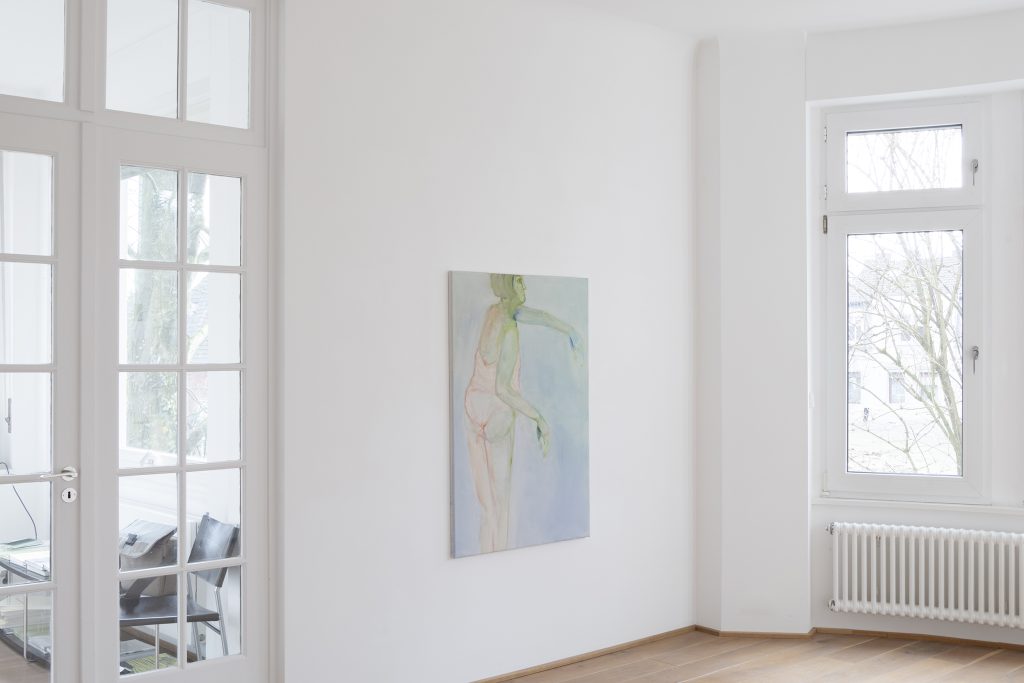
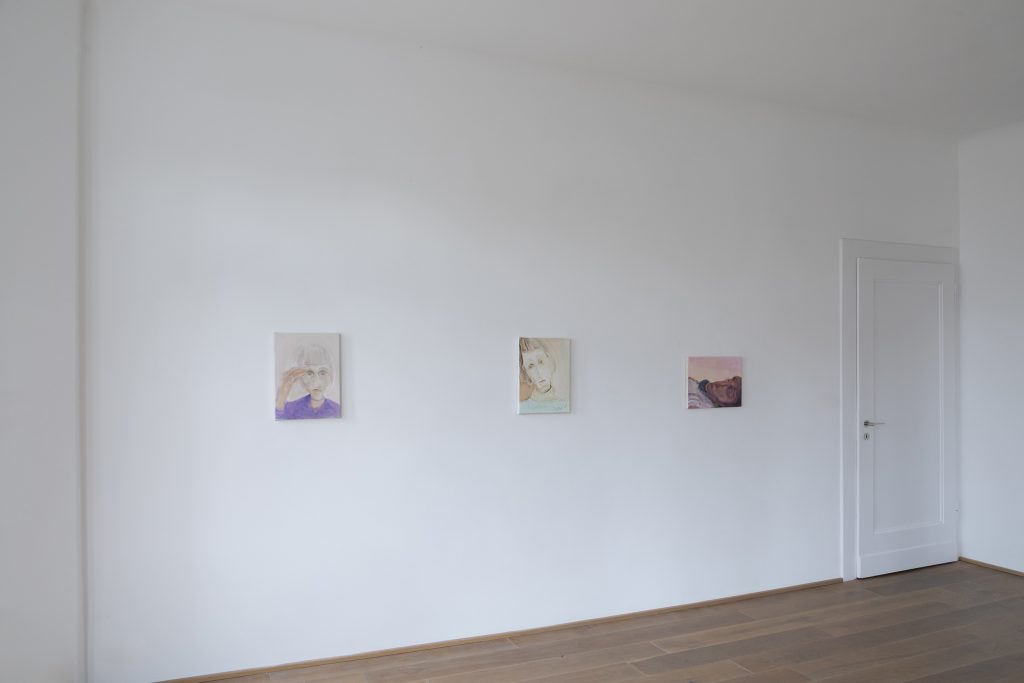
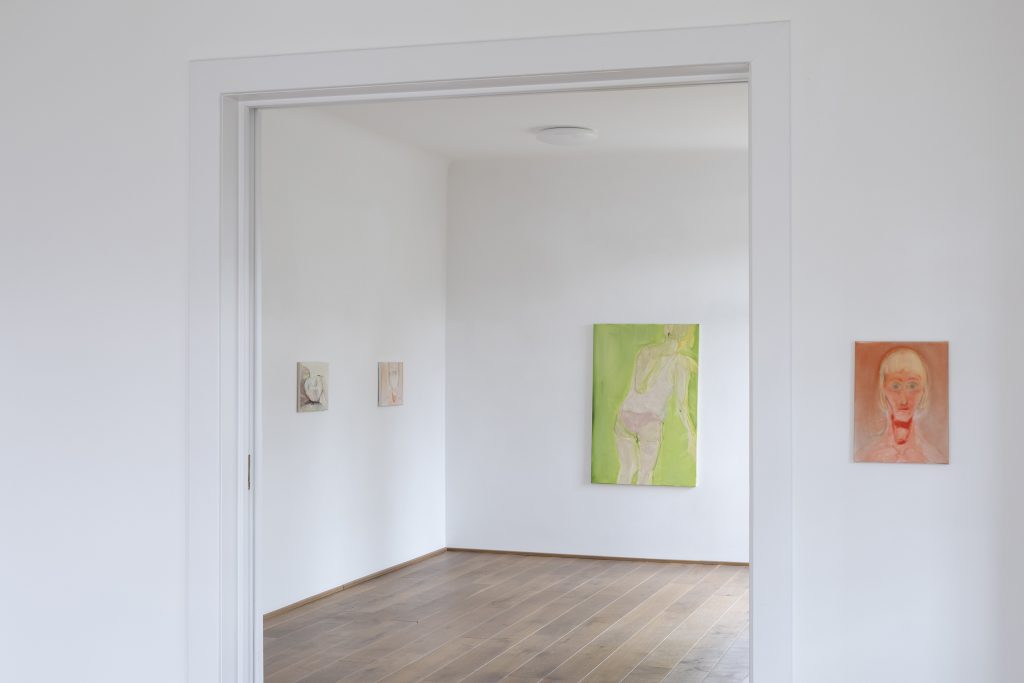
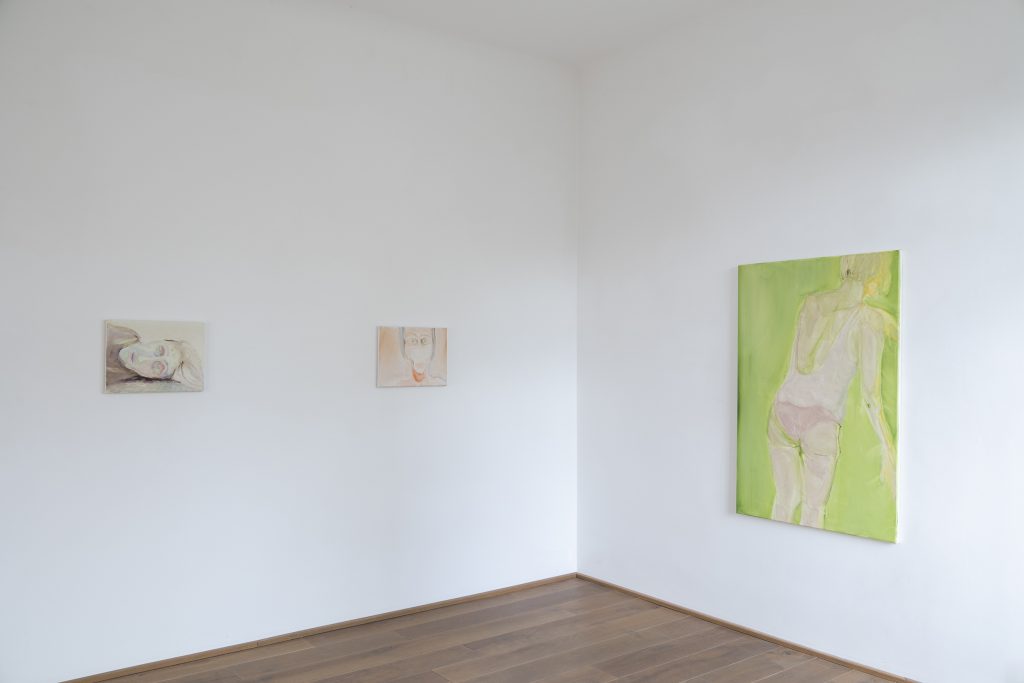
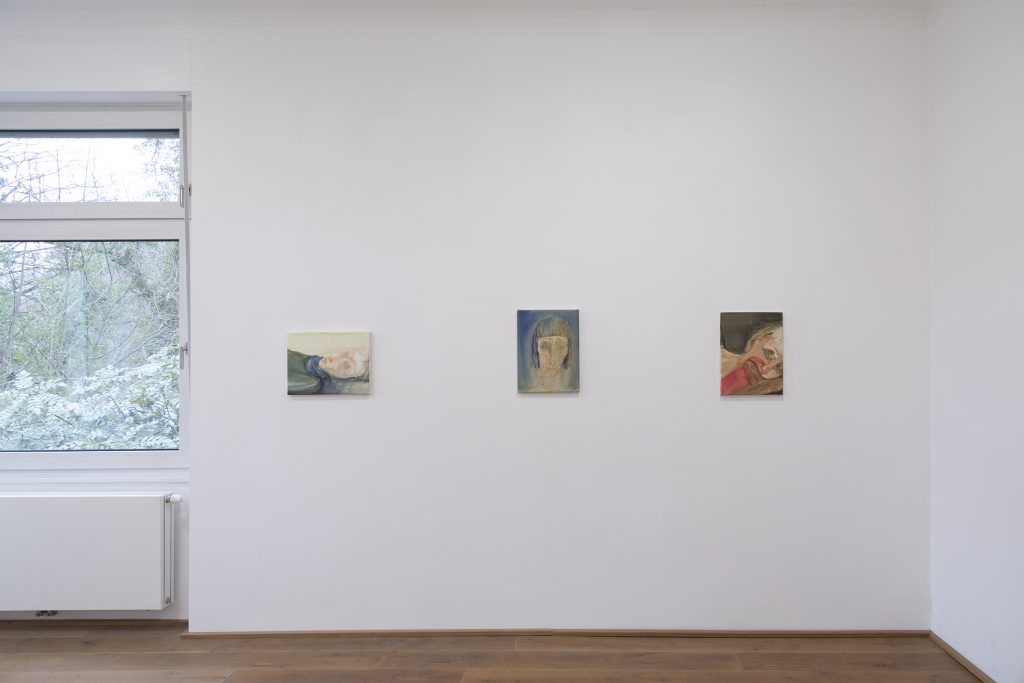
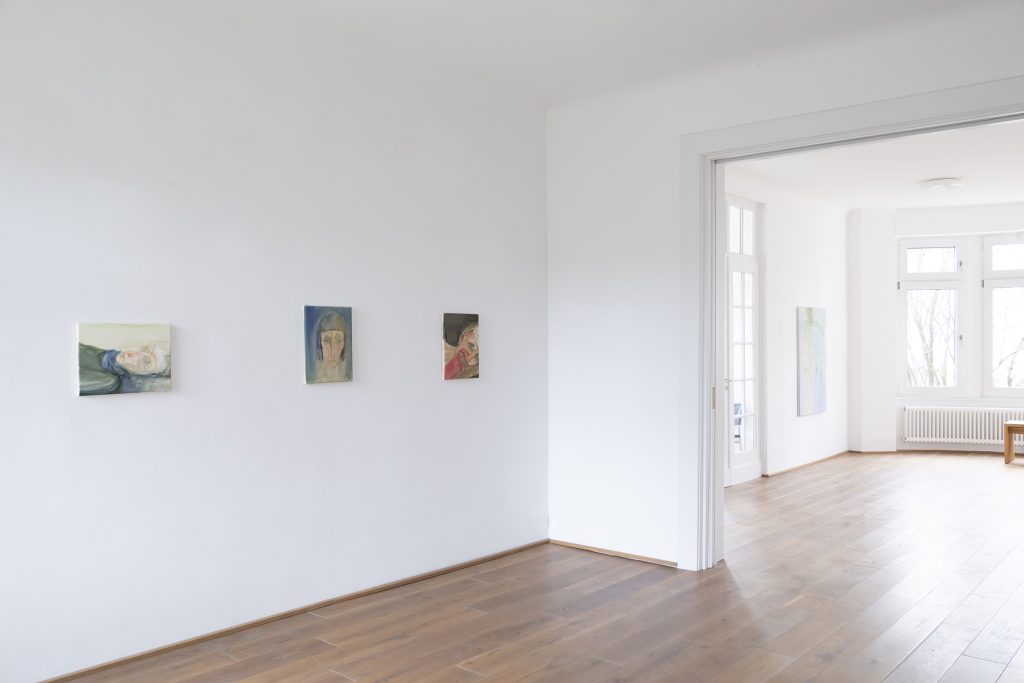
Photos: Dirk Wüstenhagen
1. Art history has always engaged with the external, with the visibility of things and people through their surfaces. Recently, as social interactions have become increasingly governed by external appearances and the possibilities for manipulating these appearances have grown, the emphasis on this outward aspect seems to have become even more important. The word ‘attractiveness’ has become a universal descriptive formula and norm in our interactions.
In contrast, Franziska Sartorius’ painting focuses on the inner perspective, and on the inevitably depicted elements of the exterior, the unadorned, that which does not orient itself towards others, but rather seeks within itself.
2. Not avoiding one’s own self, constantly starting anew, and conducting relentless self-exploration is the artistic project of Franziska Sartorius. She forgoes narrative components, does not describe a concrete space, but focuses on self-exploration, where self-exploration and self-threat are closely linked.
3. How can one translate inner moods into painting? They can be expressed through facial expressions, body posture, and even colors and their accentuations can suggest moods. Yet, the problem remains of how to make the intangible visible. The exterior must be rendered porous in painting to allow permeability to the inner self; it must become rough, avoiding the prevailing smoothness.
4. Today, when we engage with the self, it is done exclusively through media mediation, via selfies or social media. It seems that we have lost direct access to ourselves. We articulate social poses, want to please, and prefer poses as means of staging rather than a slow self-disclosure.
5. In such a painting project, the external must be drawn from an inner feeling, not from a photographic template or from looking in the mirror. No fixed schema should be prescribed; the painterly design must recreate one’s own face and body anew, and the self-feeling for one’s own proportions must be realigned continuously. From one painting to the next, there can only be similarities. How large are the eyes, the nose, how is the mouth positioned, how long is the neck stretched, how far does the chin jut out? How does the hair fall, how is it accentuated? How tense is the shoulder, how do the arms hang? How do I express the feeling of being squeezed into my body yet able to free myself from it? How do eyes, mouth, nose, ears, skin make contact with the world, only to withdraw from it again?
6. How can I, from the vastness of the psychic space, adjust myself to the demands of the world and go about my life path? Franziska Sartorius addresses the issue of identity not through social space but through the manifold relatedness to oneself. This is hard to endure because the projections, the unloading onto others, is absent. At the same time, this also brings into view the possible wholeness of one’s own human life. One perceives oneself in addressing oneself not only in the present but also in relation to the past as a younger person and in relation to the future, regarding one’s own aging and illness.
7. How is all this possible as a project of painting? How can painting capture the soul? For Sartorius, it succeeds through color. The color must breathe. To achieve this, it must be brought to a near-disappearance, minimal traces inserted as resistances, directions changed repeatedly, strokes merely suggested and at the same time reversed. Strokes must be brought to self-dissolution, constantly varied fluctuations embedded into the color. The color must continuously change and be combined with contrasting colors. Sometimes, it must retreat into brightness, like a light membrane, filtering brightnesses and, on the other hand, also glow with color, becoming tumultuous. Visibilities are only to be hinted at and at the same time made to disappear. Sartorius usually opts for a rather coarse canvas. When she first carefully massages the color into it and then almost completely removes it, a substrate is created in the recesses that brings something to a swell that is not present on the surface. This also evokes an analogue to human skin, which on one hand is sealed off and yet receptive from the underlayer. The soul cannot be pinned down to details; one must create latencies through the materiality of the color and at the same time dematerialize the color itself.
8. How can one endure the enemies within, the antagonists, and yet also make them disappear again? Are they, like in King Bluebeard’s Castle, to be locked in various rooms yet at the same time kept connected to the vastness of the world through windows? Since Bluebeard’s Castle is a complex of rooms, each expressing the truth of an individual psychological state of life, an exhibition of Sartorius’s paintings is like a panorama of an exposed psychic life.
Rolf Hengesbach
